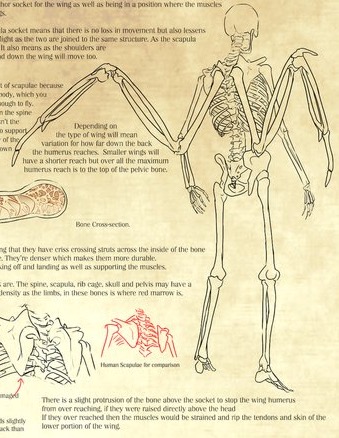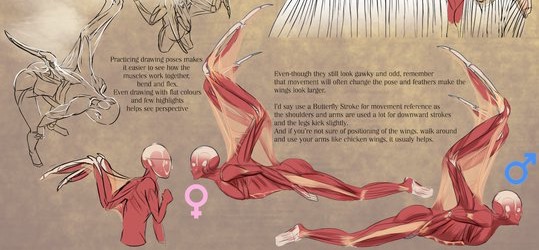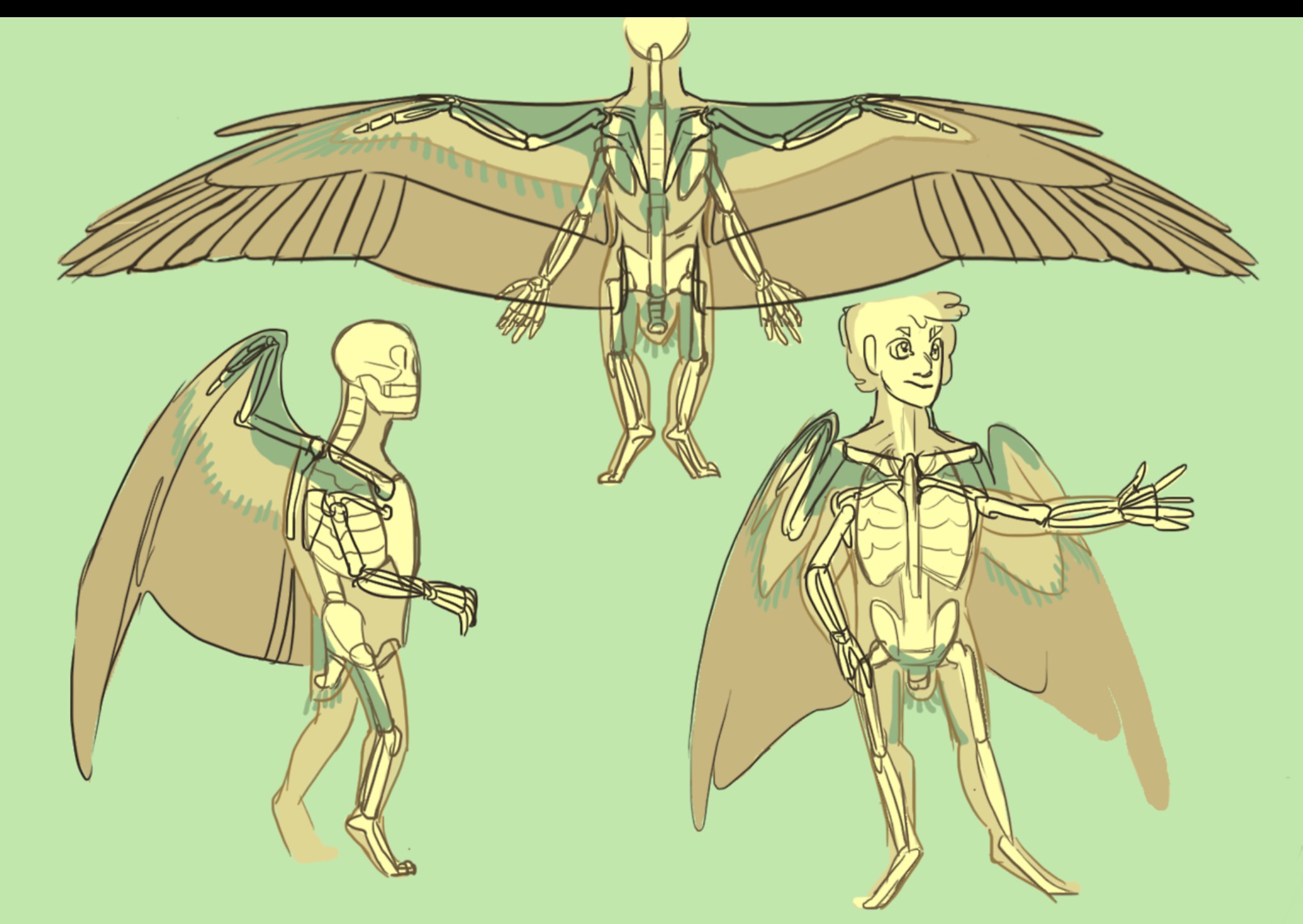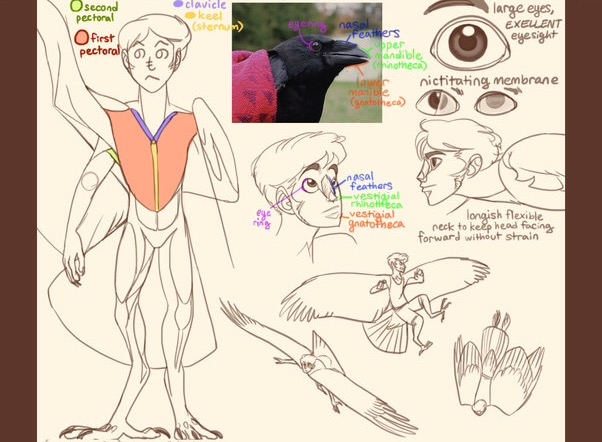I've recently come across some really nice skeletal artwork of winged humanoids, and a couple pieces in particular have got me thinking.
Deviantart artist Blue-Hearts has created this turnaround piece of their winged human concept. Here's an older piece focusing on the shoulder anatomy.
Here is a muscle study done by the same person.
The shoulder anatomy is what I want to talk about. A lot of winged human concept art I've seen will have two sets of scapula (one for the arms and the other for the wings). I'm quite partial to Tumblr artist JayRock's interpretation.
This muscle study is of a different character, but it's based on the same principle.
Blue-Hearts concept is a little closer to how classical depictions of angels are done, with the wings being on the same shoulder girdle as the arms.
To be clear, I'm not saying either design is wrong. It's hard say something is unrealistic if it doesn't exist in real life. I think that the way both artists have done their anatomy is very well done.
Some things to keep in mind when answering
Now, I've always imagined winged humans as having wings like eagles or condors and adopting a gliding/soaring type of flying. They probably wouldn't take off from a standstill, instead they would probably need to run and jump to get the necessary momentum to get going.
However, flying is only one part of the picture. Most winged humans in fiction that I've seen also use their arms and hands like a regular human.
This leads into what I want to ask about. I want these winged humans to function under these parameters:
- Being able to glide/soar (Don't worry too much about the evolutionary aspects or whether it could fly on Earth.)
- Being able to retain functionality of the arms when flying. This mainly entails being able to carry things in the arms and being capable of fine manipulation of the hands, such as using sign language to communicate in the air.
- Being able to retain functionality of the wingsarms while on the ground. This means that they can use their arms for manipulating things in front of them, but also be capable of reaching their face or behind themselves.
With the wings and arms set on the same scapula, I'd be worried about how the arms would be jerked around when the wings flap.
Conversely, the issue I have with the two shoulder girdles is that if the wings are the upper set, the arms may not reach the face or behind oneself as easily. And if they're on the bottom, the wings might not fold up as easily (depending on design of course).
Additionally, the way the arms are set up could have a lot to do with how well the winged human can fly. Even if they adopt a gliding style of flight and ride thermals to help gain height, they would still need to flap their wings. Either setup might have the arms impeding that motion.
Therefor, my question is this:
Which upper-limb arrangement would work better for both gliding flight and life on the ground?





